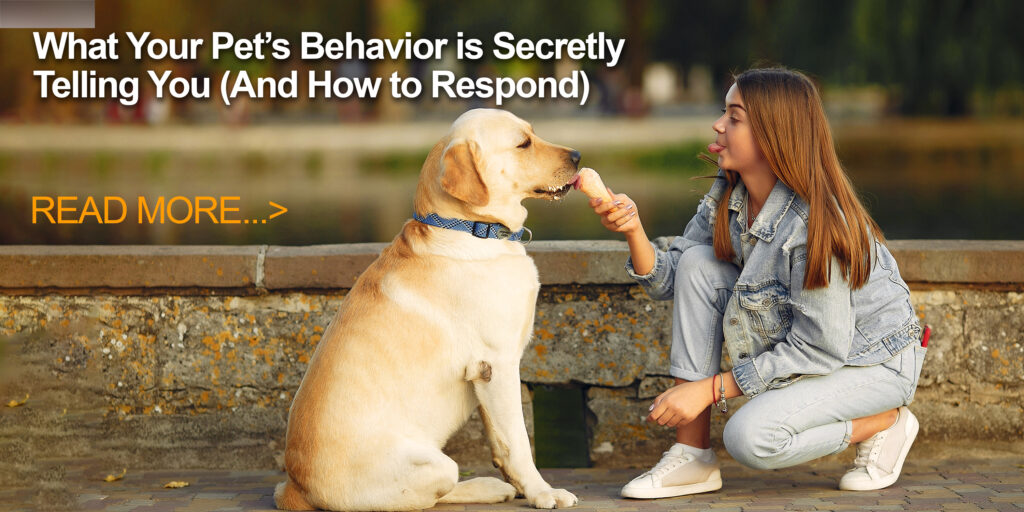Understanding Pet Behavior What Your Dog or Cat is Secretly Telling You and How to Respond
Pet’s Behavior is Secretly Telling You Our pets may be mute in the usual sense, but they always convey messages to us. Whether the dog is wagging the tail, suddenly growling or hiding beneath the bed, no act is in vain. Have you ever said to yourself, why is my dog behaving like this? or what is my cat saying to me? You are not the only one.
Knowing the behavior of your pet is how you will get closer to your animal, care more about it and through the behavior possibly predict some health problems. So, what are some of the secret messages behind some of the most frequent pet behaviors and what should you do about them?
🐶 1. Tail Wagging Doesn T Always Wag
We tend to assume an active tail wag indicates that a dog is happy. Yet that’s certainly not a universal truth. The true message is conveyed by how fast, where, and with what rigidity the dog wags.
- Free, cross-bow kick: Affable and easy-going
- Caution or uncertainty- Slow stiff wag
Tensive, high and rapid wagging: On the alert, or potential aggression
How to React
Care should be taken in regard to the entire body rather than the tail. When a dog is at ease, its eyes remain soft, the ears stay relaxed, and its movements stay loose. Should the body look rigid, give them some space.
🐱 2. Hiding May Signify More Than Simple Shyness
When anxious, sick or overwhelmed, cats will hide. An abrupt change—such as relocating, arrival of visitors, or a loud noise—may set this off.
What Should I Do?
Provide your cat with a safe quiet area. Do not push them to leave. Rather, you can provide snacks, puppies or lightly touch until they are feeling safe.
🐾 3. More Licking Can Be a Sign of Warning
Both dogs and cats lick to groom themselves or give affection. However, when the licking becomes continuous, particularly those involving paws or a particular section of the body, it may show that pets have allergies, pain, or anxiety.
What to Do
Inspect for weaknesses or wounds by the skin. If you can’t see any signs, call your veterinarian. Ask whether stress or boredom could be the underlying issue and provide more stimulation or exercise.
🐕 4. Zoomies Are Far More than “Just Cute”
Most pets break out in those unpredictable bursts of energy (zoomies) when they’re content, under-stimulated, or simply high-spirited. You often see it after a bath, while playing, or once they’ve been let outside.
What to do:
Let them go! It is a healthy and a normal thing. If zoomies occur inside the house repeatedly, boost their exercise plan and offer more organized play sessions.
🐾 5. Sudden Aggression Is Not Just “Bad Behavior”
When a typically laid-back animal growls, hisses, or bites suddenly, it’s not a sign of bad behavior; it’s most often their sole way of telling you, “Something is wrong.”
What To Do:
Be careful not to punish aggression right away. First and foremost, try to determine whether the behavior is related to pain or illness. Check the triggers then, which are new people, fear and resource guarding and see a vet or a behaviorist in a calm manner to deal with it.
🐶 6. Yawning, Pacing, and Drooling Equal Stress
Such behaviors aren’t necessarily caused by tiredness or hunger. In pets they may be an indication of anxiety, particularly in strange places or when separated.
What to Do:
Pinpoint the stress triggers that urge these reactions. What usually helps is the use of calming items such as a quiet room, natural relaxing sprays, or even toys that they can play with. When it is constant, talk to your vet.
🐱 7. A sudden clinginess — or an abrupt withdrawal — may be driven by emotions.
When your formerly aloof cat refuses to get off your lap, or your sociable dog is avoiding interaction because something is wrong with him or her.
What to Do:
Just be cool and provide them with the comfort that they require. Pet’s Behavior is Secretly Telling You Keep an eye out for additional shifts in eat Because pets reflect our moods, taking care of your mental health likewise benefits them.
🐾 8. Digging, chewing, and scratching = boredom or frustration.
The behaviors tend to indicate a pet that is under stimulated or feeling anxious, which is not a bad pet. They deserve better than spending their whole day simply lying around.
What to Do:
Find more enrichment through puzzle toys, training games or outside. weekly flip toys to make things interesting. It is vital to keep mentally active as it is important to exercise.
Adios: Your Pet’s Behavior is Secretly Telling You is talking, are you listening? Are You Listening?
Though pets lack a spoken vocabulary, their body language, behavior, and internal energy share plenty to say. Listening more carefully and acting patiently, you have a stronger bond and satisfied, sick-free life of your fluffy partner.
🔗 Want to understand your pet even better?
Explore our full guide on Early Signs of Illness in Pets and What to Do – because every behavior has a reason, and every pet deserves to be understood.


